Public Pier — No Fishing License Required
Called the Seventh Street Pier by most locals, this pier offers a pleasant park setting and some of the best fishing in this area of the bay. It is one of the best piers to fish at night, and during the summer and fall it will almost guarantee sharks for those so interested.
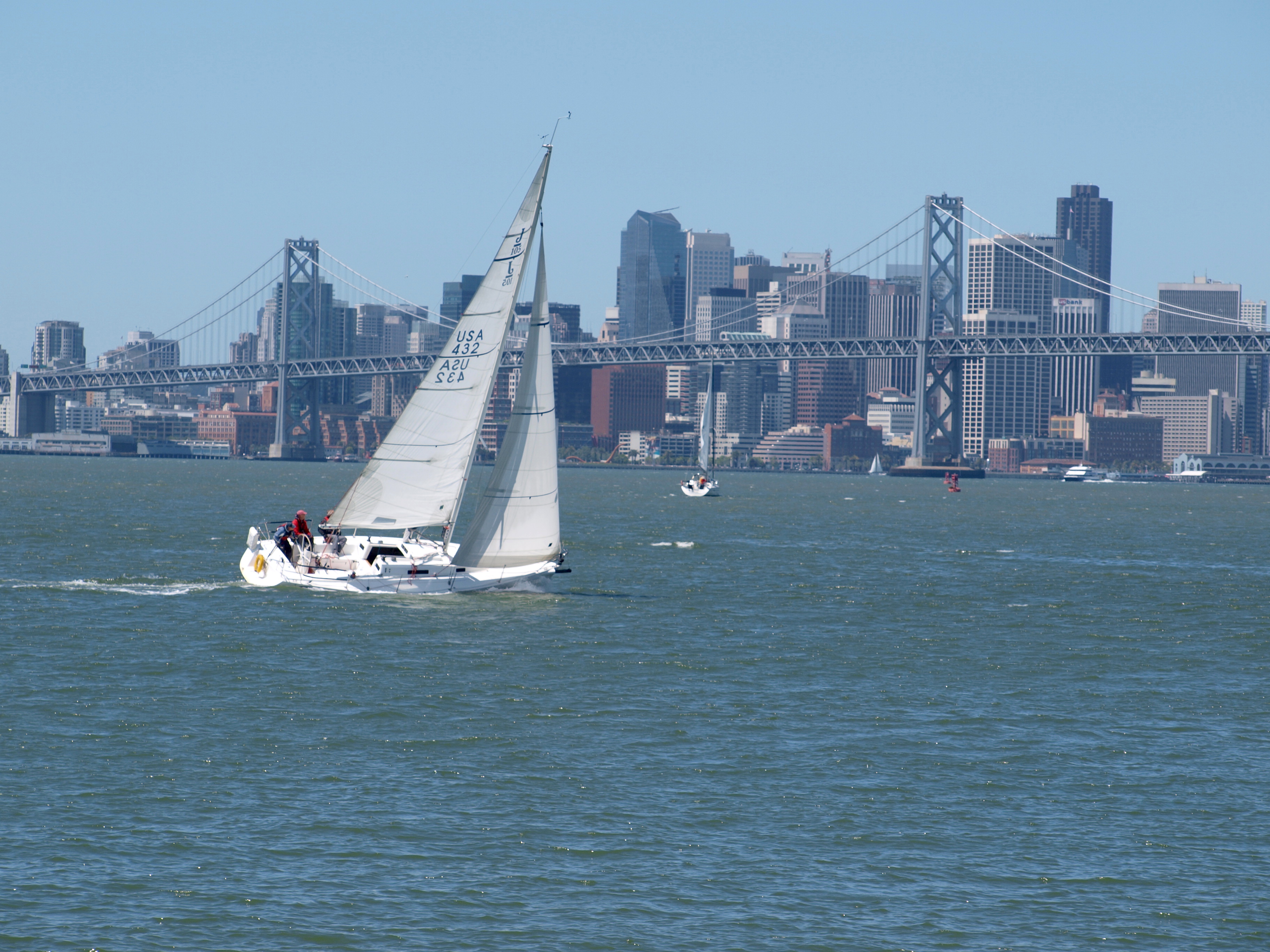
Environment. The 136 foot-long pier was built in the 1970s and is located on a man-made peninsula that juts out into San Francisco Bay; to the left is the northern end of the Inner Harbor-Oakland Estuary, to the right of the peninsula is the Outer Harbor. The tip of the peninsula is shared by Port View Park and the Seventh Street Public Container Terminal.
The park itself has undergone considerable reconstruction and renovation since the Loma Prieta earthquake of 1989. The park used to sit primarily out toward the end of the peninsula and included an observation tower that was a great spot to watch the bay and the terminal itself.
After the earthquake, the park was redesigned and it now occupies a narrow strip of land adjacent to the water. In some ways it is better, in some ways it is worse. There is a new parking lot and adjacent to it is a fishing area together with an attractive playground for the kids. However, the walk out to the old pier now takes about ten minutes, which may lessen its use by some handicapped anglers. The walk is paved and landscaped but simply too far to go for some people.
It also means you have to park your car a considerable distance from the pier. Although PFIC once got several reports of break-ins to cars, including one theft of a car battery, the reports were from quite a few years ago and regulars tell me they feel the area is much safer today. Nevertheless, I wouldn’t leave anything of value visible in a car.
Bottom here is mud and sand and the shoreline is lined with rocks. The water depth is shallow around the pier itself but good deep-water channels seem to exist within casting distance. This pier is noted for sharks and stripers but a plethora of different species can be caught.
One frequent challenge for fishermen is the dredging of the waters out from the pier in order to keep the channel deep for the large container ships. When dredging is going on the water can be very, very muddy and most of the time it seems to hurt the fishing.
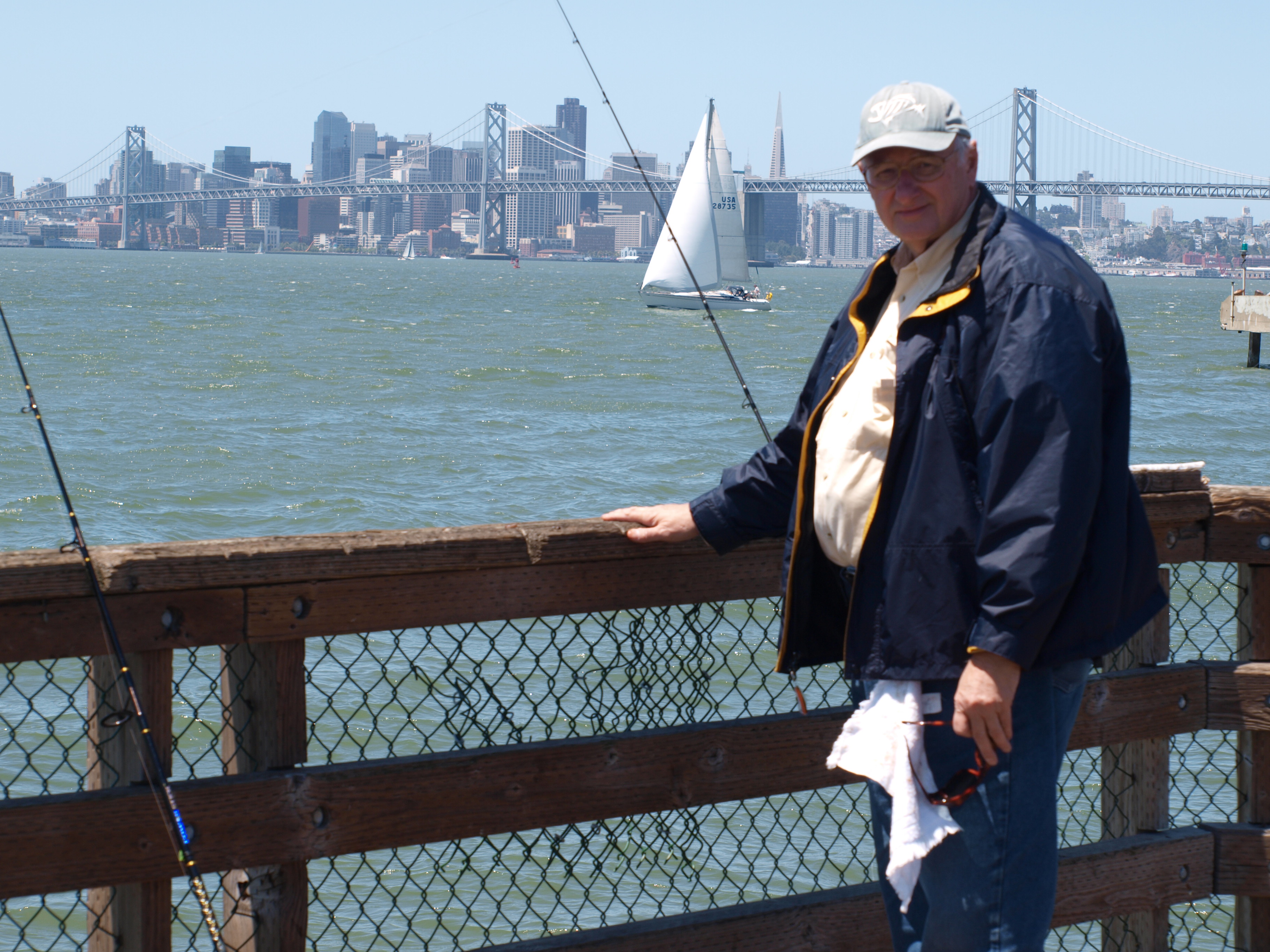
My long time fishing buddy Mike Granat
Fishing Tips. By far, the most frequently caught fish are jacksmelt. In fact, it may be the best pier in the area for the feisty, but good fighting little fish. Anglers use three small hooks, size 8-4, and fish them under a float of some time with a light sinker on the bottom. Make sure the highest hook is 3-4 feet under the surface of the water and keep your eyes on the float to see when a jacksmelt grabs the bait. Favorite baits include pieces of pile worms, small pieces of market shrimp, strips of squid and even strips of fish such as anchovy or sardine.
Generally the smelt fishermen cast out from the pier and fish on the left side of the pier when there’s an incoming tide and the right side on an outgoing tide. Thus the float is not simply returned to sender by the tide.
Casting away from the pier into the deeper waters is also best for many of the piers species—flatfish, sharks, rays and stripers.
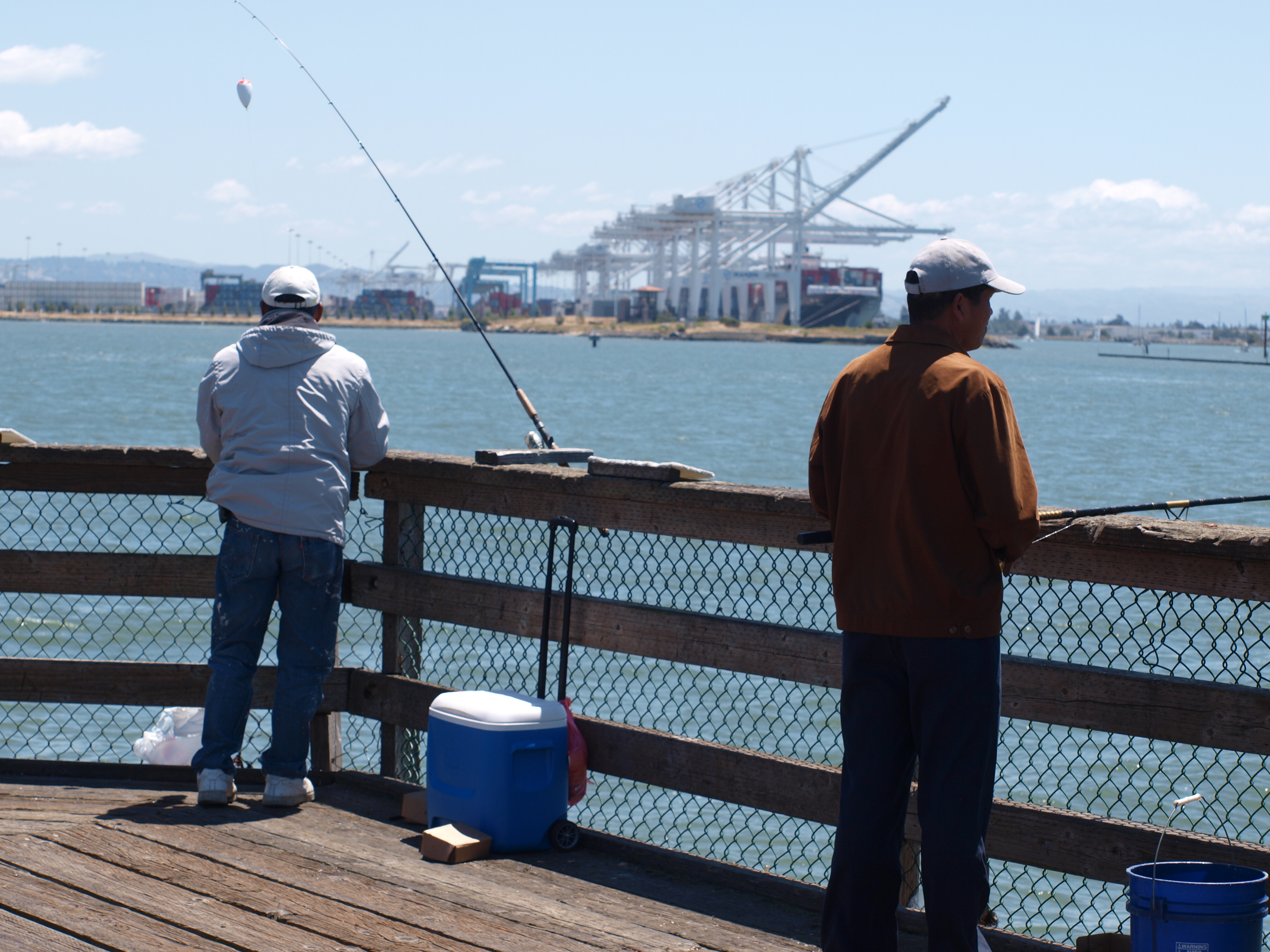
Flatfish include several different varieties. During the winter to early spring anglers may catch a starry flounder or, some years, sanddab. For the flounder use a fish-finder rigging or a high/low leader baited with pile worms or ghost shrimp. For the sanddab simply use a high/low rigging with small hooks (size 8-4) baited with pile worms, pieces of market shrimp or strips of squid. During the summer, a similar fish finder rigging or Carolina-rig baited with worms, shrimp or pieces of fish may catch you sand sole. Although somewhat fewer in numbers than other piers closer to the open bay, a sliding sinker rigging with live bait (shinerperch or small smelt) may attract a halibut.
Late spring through fall is the best fishing time for kingfish (white croaker) with a high/low rigging, size 4 hooks, and pieces of cut anchovy or pile worms.
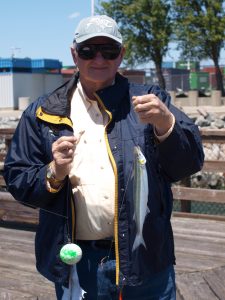
Mike and a jacksmelt
The pier can be excellent for sharks. In fact, it’s where I caught my largest brown smoothhound back many years ago (before the earthquake); it was a 35-inch fish that I considered big since they only reach 37-inches in length. Where you find smoothhound you also find their cousin leopard sharks and fish approaching six feet in length can show up. For both fish use a bloody piece of fish (mackerel) or an oily fish (such as an anchovy or a slab of a sardine). Squid is also good for both sharks and live midshipman are excellent for the leopard sharks. Fish on the bottom with size 1/0 or larger hooks.
Bat rays too are common and for the rays a whole squid has always been considered the prime bait albeit they too will hit on all the aforementioned baits. Fish on the bottom with a Carolina-type rig or a high/low rig, use a strong saltwater rod and reel, use a fairly heavy line (40-pound plus), and size 2/0 or larger hooks. If you’re not prepared for the train engine-imitating bat rays, be prepared to lose your rig and some line.
Although not a great pier for striped bass, some will show up every year and some can be large. Live bait is often a good approach with shinerperch, dwarfperch, mudsucker (longjaw goby) and small bullhead (staghorn sculpin) all working at times. Use the live bait a Carolina-rigging fished near the bottom. Back up bait is frozen anchovies, sardines, or dead but still slimy bullheads. Remember that the early evening hours are often the top times for the stripers.
Since the pier is close to the water it’s also easy pier to use an artificial lure for the stripers and a number of different lures will work.
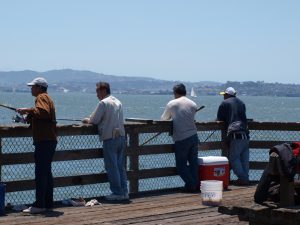
An interesting feature is that the pier is its octagonal-shape with the inner part open for fishing. This inner water is often a great spot to catch perch and small rockfish and is especially good if the children are fishing. Simply drop down a high/low rig with a couple of size 8 or six hooks baited with pieces of pile worms or small pieces of market shrimp. Perch species can be everything from the small shinerperch and dwarfperch up to the larger blackperch and even larger rubberlip perch. All will hit the aforementioned bait and rigs. Typically the blackperch, rubberlip perch, rainbow seaperch, and striped seaperch will be on the bottom. Shinerperch and dwarfperch will typically be in the lower 203 feet of water. Walleye and silver surfperch will show up at mid-depth and sometimes almost to the top. Drop down the line, see where the bites begin, and fish accordingly.
The area also sees a tremendous number of small rockfish on the bottom. Most are brown rockfish but I have also caught both blue and gopher rockfish. Small sculpins can also show up, the too common staghorn sculpin (bullhead) and less common sculpin such as smoothhead sculpin. Even small striped kelpfish have been recorded at the pier; be prepared for a variety of fish.
Potpourri — Perhaps more than you want to know about the pier
<*}}}}}}}}}>< — Driving to this pier is an interesting lesson in American capitalism. Acre after acre of land is filled with container facilities organized for efficiency and seemingly working non-stop to meet the demands of the region’s economy. The lines of trucks never seem to end nor do the ships that are loading and unloading their huge cargoes. The Port of Oakland is, after all, the third largest container port on the Pacific Coast, trailing only Los Angeles and Long Beach.
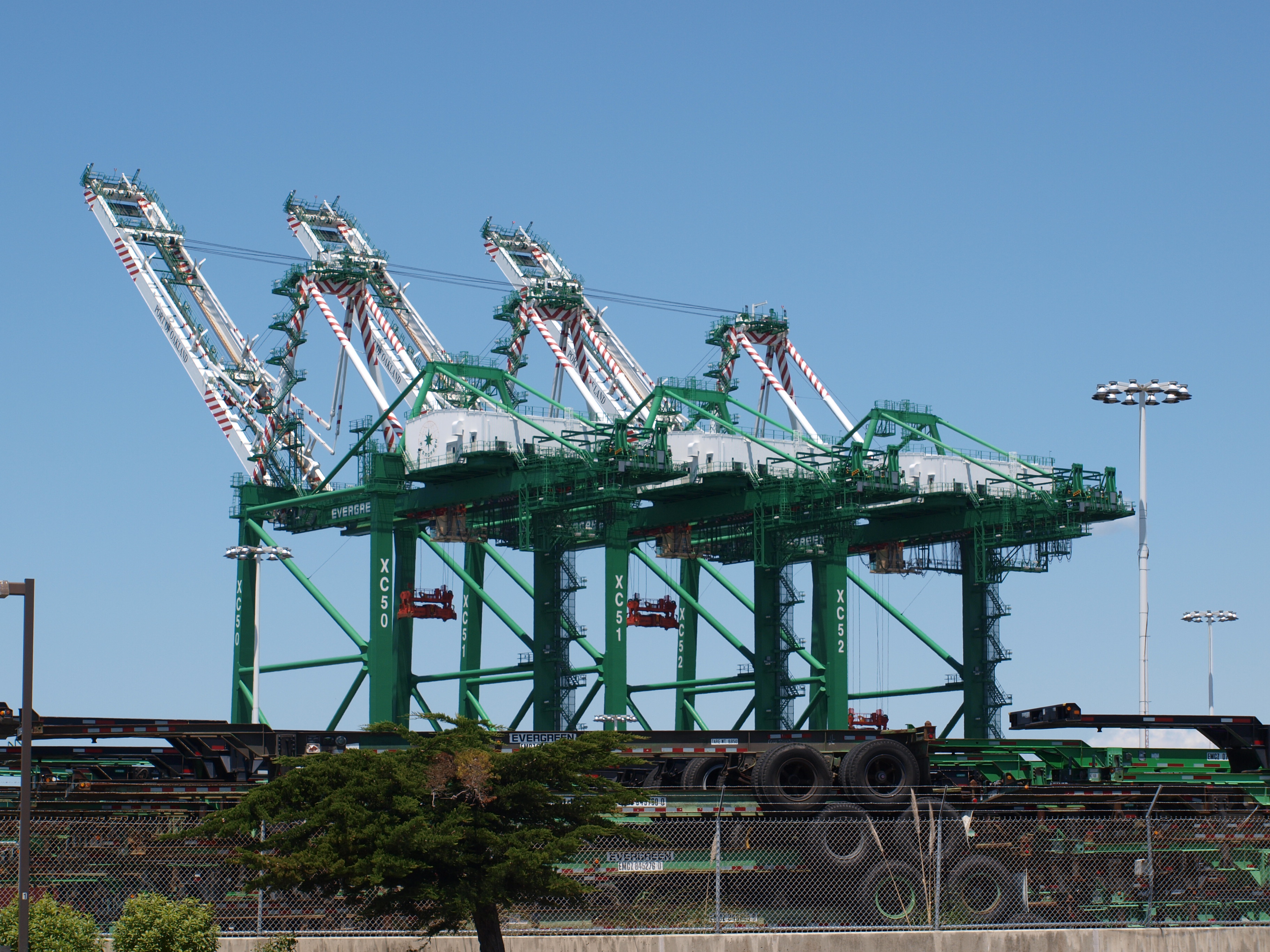
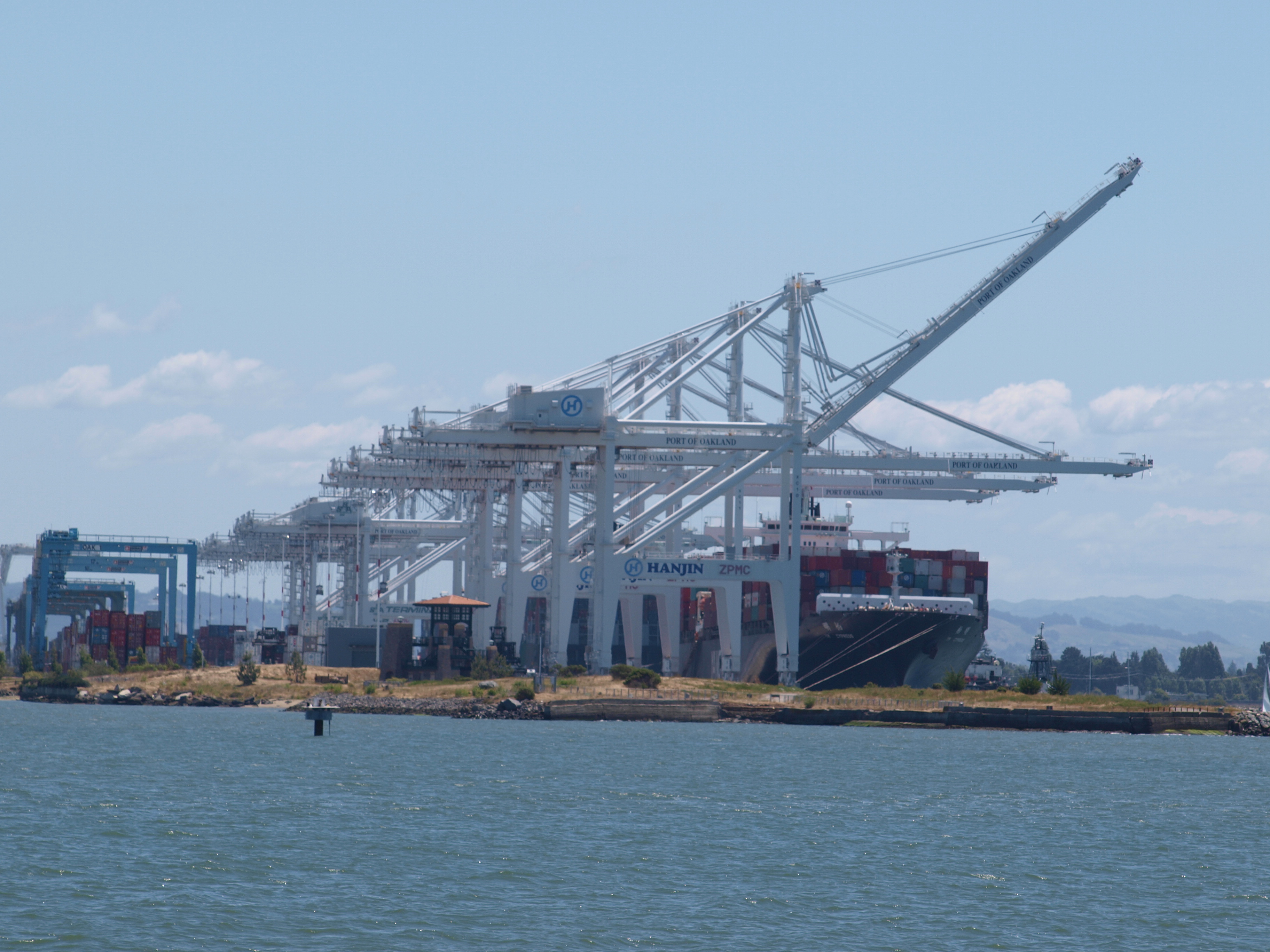
I’ve always though these cranes looked like something out of Star Wars
<*}}}}}}}}}>< — Surveys done by the Fish and Wildlife Department show jacksmelt to be (by far) the number one fish at the pier; in fact, their numbers were nearly ten times the next closest fish. Big numbers were also recorded for white croaker (kingfish) and (some years) Pacific sanddab. Various perch, flatfish, and sharays (sharks and rays) round out most of the numbers.
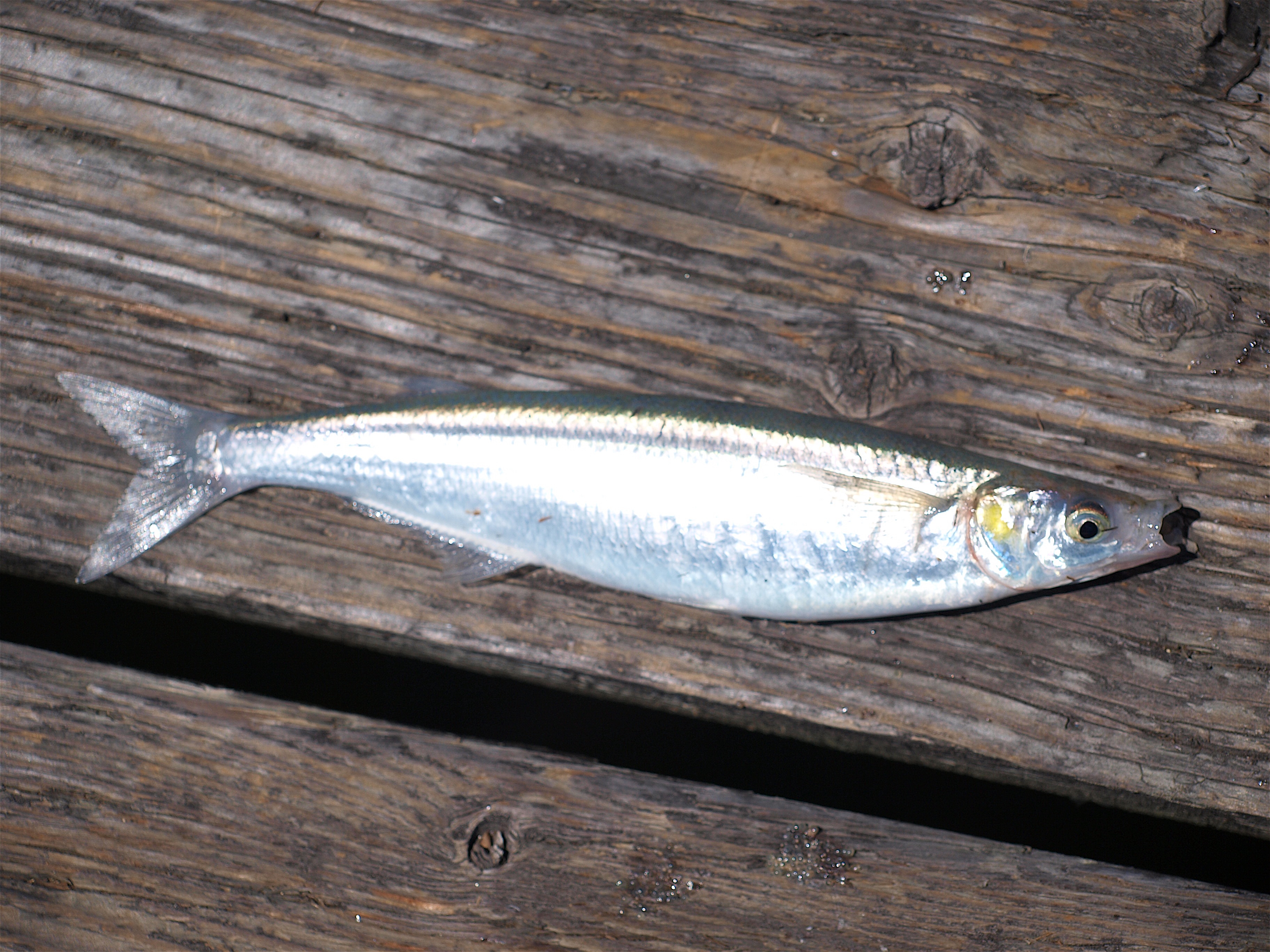
Jacksmelt
<*}}}}}}}}}>< — An interesting article!
Tainted Catch in S.F. Bay
Last week, when the sun was shining and the fish were jumping, the Hunter-McElroy family reeled in so many kingfish off the Seventh Street Pier in Oakland that they threw a fish-fry party on Super Bowl Sunday. The problem is that the kingfish, like many of the fish in San Francisco Bay, were contaminated with a toxic byproduct called dioxin, which causes cancer.
But local governments are considering a regional attack on dioxin. Tonight the Oakland City Council will consider a resolution to stop future dioxin pollution. San Francisco supervisors will take up a similar resolution later this month.
The Bay Area discussions come on the heels of the federal Environmental Protection Agency’s proposal in November to make controlling dioxin-like compounds in the bay a “high priority.” The federal watchdog agency and the state EPA found dioxin in the Bay Area’s air and water beginning in 1994. A byproduct of burning plastics, refining oil, bleaching paper and driving diesel-powered vehicles, among other sources, dioxin accumulates in the bay’s sediment and works its way through the food chain, eventually lodging in the fatty tissue of fish.
But getting rid of the chemical is difficult because it remains in the ecosystem for generations. “It’s a massive health problem that affects every man, woman and child and thousands of people who fish the bay for food,” said Greg Karras of Communities for a Better Environment, a San Francisco environmental group. “If Oakland and San Francisco can take the lead on this and say here’s what we’re specifically going to do to eliminate dioxin, it will be a model for the nation and the industrial world.”
If both cities approve the resolutions, there are plans to form a regional task force made up of industry leaders, environmentalists and regulatory agencies. The problems facing everyone from scientists to government officials are: How to get rid of dioxin and how much dioxin is harmful?
The regional task force would encourage businesses to find alternatives to materials that emit dioxin when they are banned. Another hope is to eliminate the stuff that produces dioxin… After decades of widespread use of now-banned herbicides and un-regulated industrial processes, scientists believe that all people have some dioxin stored in fatty tissue, said Dr. Rajiv Bhatia of the San Francisco Department of Public Health…
But experts differ over how much dioxin our bodies can handle and what the worst dioxin-polluting culprits are…Valeria Hunter, an Oakland mother of four teenagers, does not care about the squabble over who is to blame for the dioxin poisoning of the fish she catches in the bay. She just wants the contamination to stop. “They’ve got to do something about the pollution,” she said last week, casting her line off the Seventh Street Pier.
Hunter has been fishing the bay for 15 years. Her kid’s fish. Her 8-year-old nephew Alphonso Nears fishes. So does her husband, William McElroy. The family fishes a couple of times a week. One moonlit night, the family caught 13 sharks, which ended up on the family dinner table. “I love to fish. Love to eat it. Love everything about it,” Hunter said. “But now you’ve got to limit how much you eat, especially if you’re pregnant or breast-feeding. They got that big ol’ yellow sign out there warning people.”
State and local regulatory groups put up signs warning people in six languages to limit the amount of fish consumed out of the bay to two meals a month. But most of the 1,000 or more people who fish the bay eat a lot more fish than that, according to studies conducted by Communities for a Better Environment and two other environmental groups. The studies, which surveyed the fishing habits of hundreds of bay anglers from 1993 to 1997, reached similar conclusions: Most people who fish the bay eat their catch. Most anglers are people of color—the Richmond Laotian community, Chinese Americans who live in San Francisco and African Americans from Oakland and Richmond. Many are low-income.
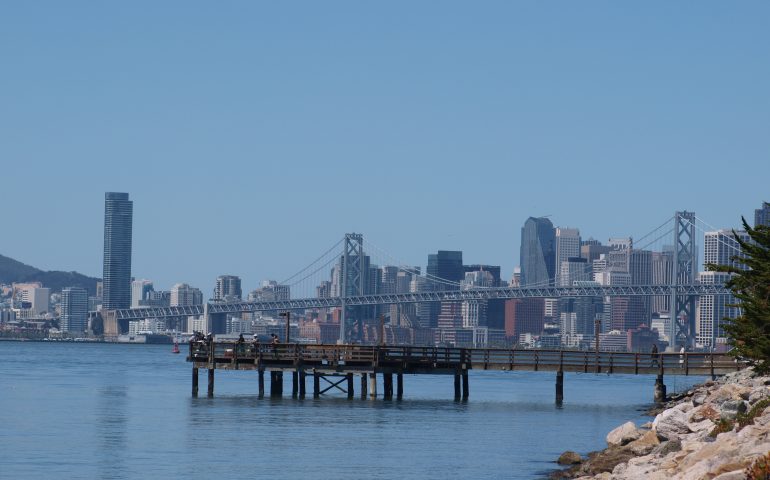
Ken, the gate to the pier says dawn to dusk on the signed mounted on the left side of the gate (as you are entering it). Upon leaving, the sliding gate my be closed if you exit after sunset. Then you can open the door and let yourself out.
The sign at the parking lot reads park curfew 10pm-5am and surveillance camera.
So, you cannot fish the pier 24 hours like years back not drive up to it as in years past. The parking lot area requires a license and 1 pole according to enforcement.
Note Ken, as said, the massive dredging has had an adverse effect on the fishing from what it was. I will also note that I have done as well, better for adult leopard shark during the day there (when I fished for them). That was 10 years ago and the fishing is not like that at all anymore. That was parking lot area and pier on midshipmans.
Fishing sucks there. When I was a kid it was the best. Now I’m in my forties and the fish are gone.
It’s Everywhere Jay. Fishing is not what it used to be.
To add to Red Fish’s comment: In a recent trips I’ve come to learn the gate to enter the parking lot opens closer to 6:30 and closes closer to 7:30. Be sure not to to leave your car in the parking lot fishing late! You’ll be able to get past the gate and back to your car, but leaving the parking lot will be a challenge to say the least.
Also, maybe it’s because I haven’t been fishing as long as some other members, but the fishing doesn’t suck here. In fact this pier has brought me my biggest striped bass and bat ray.